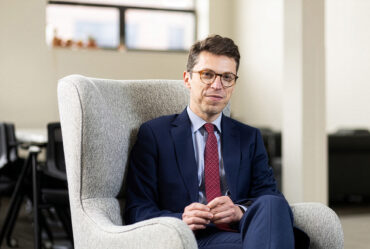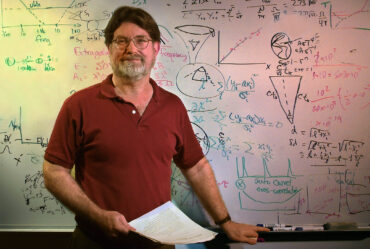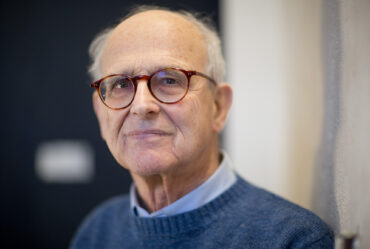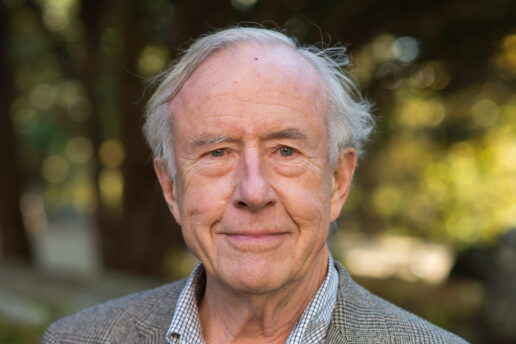
X-ray astronomy leader George W. Clark dies at 94
Clark led investigations in cosmic-ray physics, and gamma-ray and X-ray astronomy.
Professor emeritus of physics George Whipple Clark PhD ’52, an astrophysicist who was a pioneer in X-ray and gamma-ray astronomy, died on April 6, 2023, in Boston. He was 94.
Clark employed buckets, balloons, rockets, and satellites in his nearly lifelong pursuit to understand the nature and origins of cosmic rays, gamma rays, and X-rays.
Clark discovered the polarization of cosmic-ray muons, collaborated with the late Physics professor Bruno Rossi on several large ground-based cosmic-ray air shower experiments, and used balloon-borne and satellite instrumentation to locate X-ray sources.
He was a principal scientist for satellite experiments that resulted in the discovery of high-energy gamma rays from the Milky Way galaxy, and produced evidence for an isotropic component that is now known to arise from other more distant galaxies. His pioneering work in the use of balloon-borne instrumentation for observing celestial X-ray sources led to his discovery of high-energy X-rays from the Crab Nebula. A primary contributor to the NASA OSO-7 and Einstein satellite X-ray astronomy missions, Clark initiated the use of Bragg reflection for high-resolution X-ray spectroscopy with Professor Claude R. Canizares for the latter. He was the principal investigator for the MIT X-ray instruments on the Third Small Astronomy Satellite (SAS-3).
“He helped chart the future of X-ray astronomy by prioritizing the Chandra X-ray Observatory,” says MIT Kavli Institute director Robert Simcoe. “He played a major role in the discovery of celestial gamma-ray sources.”
On the MIT Physics faculty for 44 years, Clark recruited and mentored several generations of leading astrophysicists. George was a founding member of MIT’s Center for Space Research, now the MIT Kavli Institute.
Early Interest in Science
Clark was born on August 31, 1928, one of four children raised by the late Robert Keep Clark, an MIT alum who was the general manager of a stove factory, and Margaret Whipple Clark, a pianist and graduate of Oberlin College. Growing up in Harvey, Ill., his interest in science bloomed when, as a 7th grader, he was fascinated by his father’s 1895 college chemistry textbook. Together they set up a basement lab. “I made all sorts of experiments and chemicals, some of which give me the willies when I think about them now,” Clark had recalled.
But it was his father’s copy of Amateur Telescope Making that taught George how to ground and polish a six-inch parabolic mirror, which he placed into a four-foot telescope that he mounted in a field near his family’s summer home. He would later use that 6-inch mirror when he taught Junior Lab at MIT.
In high school, he took advanced junior college courses in chemistry and calculus, and in 1945, he finished in the top 10 in the Westinghouse Science Talent Search with an essay about his chemical work with rare-earth elements. He earned a trip to Washington, where he had his picture taken with Vice-President Truman and had tea with First Lady Eleanor Roosevelt.
MIT Launch
After graduating from Harvard in 1949 with a B.A. in physics, he pursued his doctorate at MIT, joining Bruno Rossi’s Cosmic Ray Group in the Laboratory for Nuclear Science and Engineering. After receiving his PhD in 1952, he joined MIT as an instructor.
“Professor Rossi invited me on a journey of exploration that would be guided by his unerring sense of scientific opportunity,” Clark said. He added that it was a time when “public support of curiosity-driven research was at its peak, based on the recognition that it was the foundation of the spectacular successes of goal-oriented war research.”
Rossi and his team were trying to figure out how to discover the origins of cosmic rays, which are high-energy particles, mostly protons, traveling from outer space and entering our atmosphere. Interaction with atmospheric nuclei in the upper atmosphere results in a “shower” of other particles, mostly pions, which swiftly decay to emit muons that travel at nearly the speed of light to the earth’s surface.
Clark and other Cosmic Ray Group members worked on several large cosmic-ray air shower experiments (EAS) to measure the energy spectrum of the primary cosmic rays, as well as to determine their arrival directions.
He partnered with Peter Bassi, a visiting scientist from Italy, to set up scintillation detectors — 5-gallon cans filled with toluene — on the roof of the physics building. Electrical pulses were displayed on an oscilloscope viewed by an automatic film camera, and the resulting measurements proved that using the novel methods of density sampling and fast timing could yield arrival directions within a few degrees and shower sizes within a few percent. This led to a larger such experiment on the grounds of the Agassiz Station of the Harvard College Observatory, and other MIT-led air shower experiments in India, Bolivia, and New Mexico.
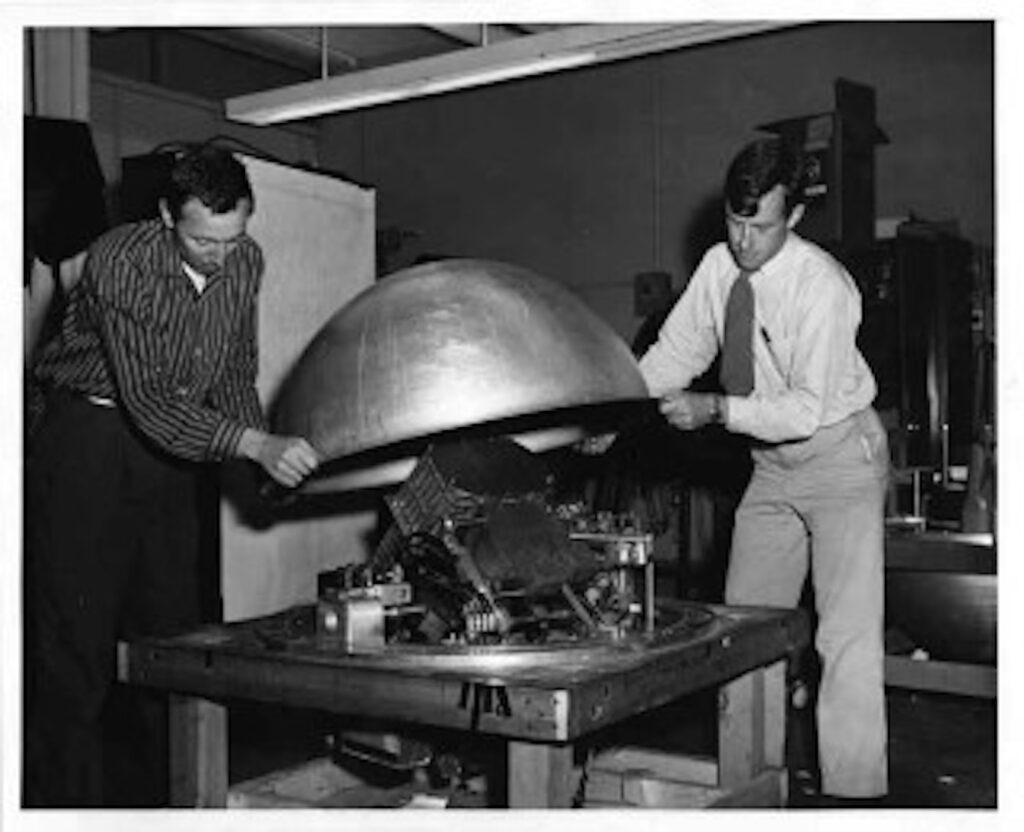
Clark and his colleague William Kraushaar created balloon-borne experiments to detect a very rare component of the primary cosmic radiation but were thwarted by the high rate of background events caused by radiation higher up. That’s when the newly created NASA offered space on its Explorer 11 satellite for Kraushaar and Clark’s high-energy gamma-ray telescope.
Gamma and X-rays are high-energy photons that travel mostly in straight lines through the galaxy like visible light. These signals from outer space provide information about the galactic and extragalactic media through which they travel as well as the cosmic objects from which they emanate such as stars white dwarfs, neutron stars, black holes, supernova remnants, galaxies, and diffuse gas in galaxy clusters.
The pair designed the 82-pound satellite in the shape of a potato masher, designed to tumble in orbit to scan the entire sky; from April to September 1961 it registered 31 events of possible cosmic gamma rays until it powered down. Gordon Garmire joined them in creating an improved gamma-ray telescope that flew in 1967 on Orbiting Solar Observer 3 (OSO-3). It demonstrated convincingly that gammas of energies above 70 MeV were emanating from the Milky Way and also offered the first evidence for what is now known to be gamma rays from distant galaxies.
X-ray Vision
The Sun was the only known source of cosmic X-rays, and Rossi wished to find other sources but was too busy with other projects, so he asked his former student Martin Annis for help. Annis was president of American Science and Engineering (AS&E), a small research firm located on Carleton Street, where the MIT Medical Center is now. It had been founded a few years earlier by Annis and Clark, his former Rossi Group student colleague and friend.
Annis referred Rossi to a recent hire, Riccardo Giacconi, who immediately took to Rossi’s suggestion that a search for cosmic X-ray sources be carried out. The AS&E scientists and Rossi carried out a rocket experiment in 1962 that discovered a bright celestial X-ray source, which they called Sco X-1, because it was located in the constellation of Scorpius. This launched the field of extra-solar X-ray astronomy.
AS&E began with contracts with the Air Force Cambridge Research Laboratory to research weapons’ effects, including radiation, at high altitudes. But AS&E continued to use rockets to explore the X-ray sky with the participation of MIT scientists, one of whom was a visiting scientist from Japan, Minoru Oda, who soon became the father of a thriving program of X-ray astronomy in Japan. In 1967, MIT began its own X-ray astronomy rocket program under the direction of Professor Hale Bradt.
During all this activity, Clark focused his research on this new field. Cosmic X-ray photons with energies greater than 15 keV could penetrate to altitudes accessible by a helium-filled balloon, so he loaded an X-ray telescope with a scintillation detector onto a giant “skyhook” balloon in Texas. It scanned the Crab Nebula, which became the first known cosmic X-ray source emitting X-ray energies greater than 15 kilovolts. The balloon program continued with productive results under Clark’s graduate student James Overbeck and then under Professor Walter Lewin. Notable were measurements of a change in the X-ray flux from the source Cygnus X-1 and a flare in the flux from Sco X-1.
“X-ray astronomy was sort of a surprise,” says Bradt. “Nobody really predicted that there should be detectable sources of X-rays out there.”
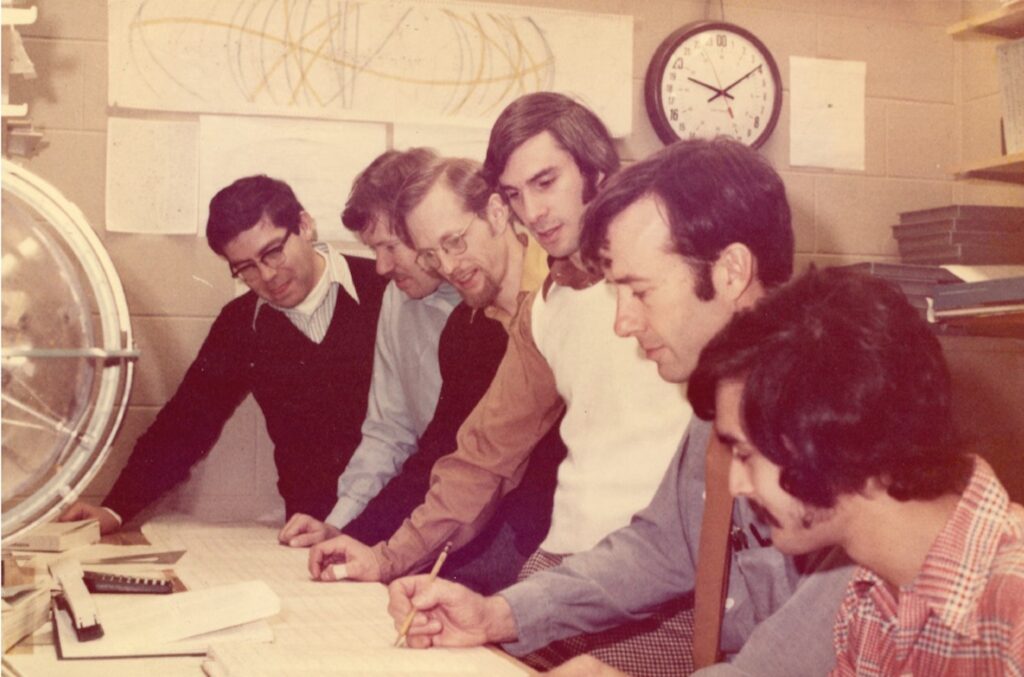
In the 1960s and 1970s, Clark’s research also used NASA satellites to carry out X-ray astronomy observations, notably OSO-7 (1971–1974), SAS-3 (1975-1979), and Einstein (1978-1981).
Clark pushed for an AS&E/NASA satellite X-ray observatory, to be launched in 1970 from Kenya as the First Small Astronomy Satellite (SAS-1), named Uhuru (Swahili for “freedom”) under the leadership of Giacconi. Scanning the whole sky, it discovered hundreds of previously unknown cosmic X-ray sources and provided the first observational evidence that X-ray sources were often in binary star systems and that supernova remnants were typically X-ray emitters, as were Seyfert galaxies and clusters of galaxies. It also confirmed an earlier observation of an isotropic X-ray background. These results, mostly by the AS&E team, established X-ray astronomy firmly as a major branch of astronomy alongside optical (visible-light) and radio astronomy. Giacconi was awarded a Nobel Prize for his efforts.
Clark was a principal investigator on the Seventh Orbiting Solar Observatory, or OSO-7 Satellite, for MIT’s first X-ray satellite experiment which yielded, in collaboration with MIT research scientist Thomas Markert, an all-sky survey of X-ray sources.
He followed this as principal investigator on SAS-3, a NASA satellite carrying the first X-ray observatory that could point at a given source continuously for sustained periods. SAS-3 carried instruments proposed and used by himself with David Hearn and by professors Bradt, Herbert Schnopper, and Lewin. Graduate student Saul Rappaport, who later joined the MIT faculty, soon became a major user. The SAS-3 satellite could be “driven” by a team of professors, postdocs, and students taking turns around the clock to direct the observatory’s operation from MIT. It produced a plethora of rich results and discoveries elucidating the nature of X-ray emitting binaries, “bursters,” novae, pulsars, globular clusters, a soft diffuse background, and magnetic white dwarfs.
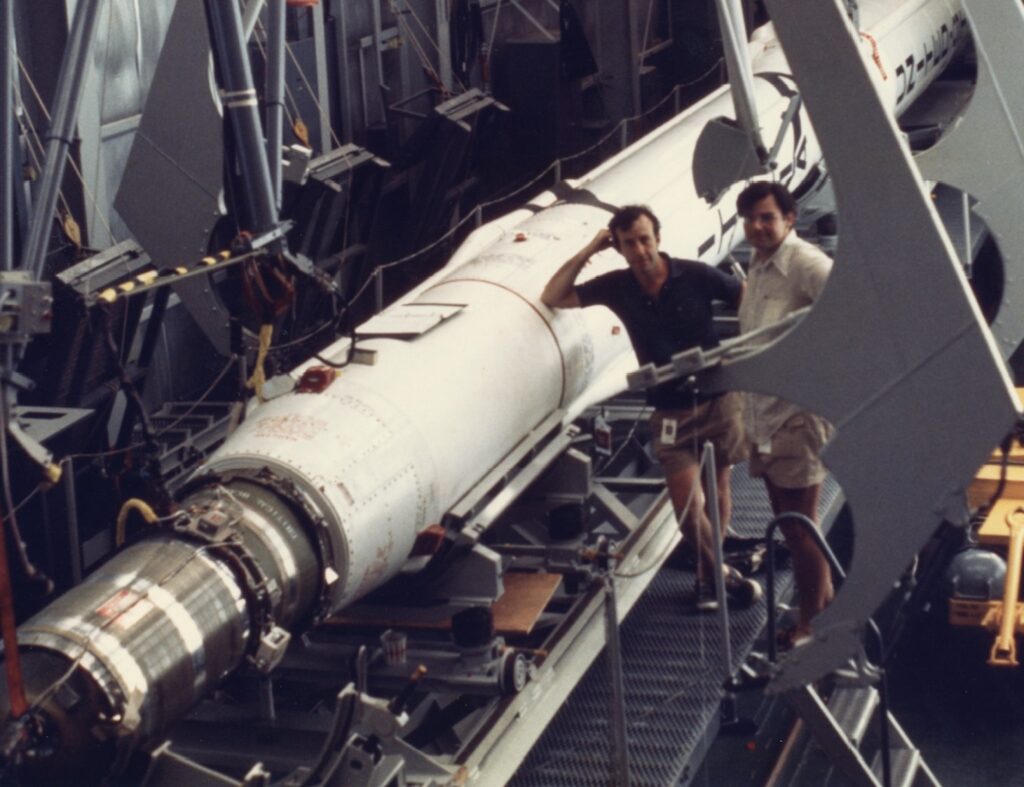
“Within a couple of hours of an observation we received ‘quick-look’ data by a dedicated line from the NASA control center, and a few days later the complete observation and engineering data on magnetic tape,” recalled Clark.
One day Lewin noticed a sequence of several short X-ray bursts separated by about 20 seconds and positioned the view field of the detector on a remarkable X-ray source he nicknamed “The Rapid Burster,” an accretion-powered X-ray binary at a distance of more than ten thousand light years.
Clark received the NASA Exceptional Scientific Achievement Award for his work as PI of the Einstein Observatory Focal Plane Crystal Spectrometer, which used the technique of Bragg spectroscopy to perform high-resolution spectroscopic studies of cosmic X-ray sources in the 0.2-3 keV energy range, on the Einstein X-Ray Observatory (HEAO-2, 1978-1981). The second of NASA’s three High Energy Astrophysical Observatories, Einstein was a Large Orbiting X-Ray Telescope (LOXT) — the first fully imaging X-ray telescope put into space.
The X-ray sky is much more variable on human time scales than most of the visible sky. Sources vary in intensity on time scales from milliseconds to years. Clark strongly advocated for a NASA mission that would become the Rossi X-ray Timing Explorer (RXTE), which would carry an MIT experiment, an All-Sky Monitor, an effort led by Bradt. RXTE observers studied sources exhibiting intensity variations ranging from milliseconds to years over a period of 16 years (1995-2012).
“When George got in his head something that he thought was the right thing to do, he charged ahead, damn the torpedoes and the political fallout,” says Bradt.
Clark and other X-ray astronomers in the U.S. took advantage of “guest observer” opportunities with Japanese and European orbiting X-ray observatories during a hiatus of NASA X-ray astronomy missions in the 1980s.
As a member of the National Academy of Sciences decadal study (the “Field Report”) Clark helped chart the future of X-ray astronomy by prioritizing the development of Einstein’s successor, the Advanced X-Ray Astrophysics Facility (AXAF), later renamed the Chandra X-ray Observatory. Chandra features a high-resolution large collecting area, and sensitivity to higher energy X-rays to study extremely faint sources in crowded fields. Clark used Chandra data to study the grain-scattered X-ray halos of accretion-powered binaries, and from the shape and size of a halo he tried to figure out the location and characteristics of the dust and the distance of the star.
Team Coach
One day, Clark said to Canizares, “Did you ever think what we would be doing if we weren’t being paid to have fun?”
When Clark hired Canizares in 1971, it was a period where most astrophysicists in the department were physicists learning astronomy as they went. Clark “took Bruno Rossi’s original ideas and really was able to move them forward,” says Canizares. “He really helped me throughout my career and did a lot to further the careers of his students and colleagues.”
He propelled his colleagues’ careers by evolving the MIT X-ray astronomy effort into several distinct groups that he trusted to work independently.
“We were all freed to make our marks, and that led to long careers at MIT for each of us,” recalls Bradt. “MIT became one of the premier X-ray astronomy research groups in the world in large part because of this decentralized, non-hierarchical approach initiated by Rossi and Clark.”
Added Bradt, “George was a gentleman through and through. After one contentious encounter, he called me and said ‘It is important we stay friends.’ I loved him for that. He was instinctively empathetic toward individuals in difficult situations, sometimes more so than others of us.”
Earth-bound Professor
Clark was a member of the MIT Physics faculty for 44 years, from his appointment as Instructor in 1952, Assistant Professor in 1954, Professor in 1965, and 1985 as the first Breene Kerr Professor of Physics. He served as Astro division chair from 1983-1988 and took sabbaticals in 1985 and 1994 to perform research at the Institute of Space and Astronautical Science in Tokyo, Japan.
In 1996, he became a professor post-tenure (retired). He continued to teach 8.13/8.14 (Junior Lab) until 1998, and mentored students until he officially retired and became an Emeritus Professor in 2001. He continued to attend department colloquia, and he published a major single-author paper based on Chandra data in 2018.
Clark was a member of the American Physical Society, American Astronomical Society, American Academy of Arts and Sciences, and the National Academy of Sciences (NAS). He served on the Study Committee for Institutional Arrangements for the Space Telescope, and on boards and committees with the Associated Universities for Research in Astronomy, American Science and Engineering, and NASA. Clark left MIT for a semester in 1963 to join the space research group under Prof. Giuseppe Ochiallini at the University of Milan, supported by a grant from the Guggenheim Foundation and the Fulbright Program.
At MIT, he was respected by colleagues and students for his contributions to the field and dedication to teaching.
“My greatest satisfaction from sixty years of work in science is having participated in the start of several new areas of research in cosmic physics,” Clark said. “I’m astonished and delighted to see how those areas have developed and awed at the scale and complexity of the projects developed to support them.”
Clark was known as the professor who offered clear explanations to his students, stayed after his lectures to answer questions, and would often be seen dashing through the halls to make it to the next classroom. But Bradt recalled that as his advisor, Clark could also be pretty hands-off.
“When I took my thesis experiment up to New York State, three trailers with detectors, electronics, and a generator, I didn’t see George out there but once. We were on the phone at critical times. He was not in your hair all the time but was available when needed. He was the perfect thesis supervisor.”
But Clark was also “the kind of guy who loves to roll up his sleeves and do some real work,” Mark Schattenburg, now a senior research scientist at the MIT Kavli Institute, said in a letter presented at Clark’s retirement fete. “Give him a ladder and some roofing shingles, or an oscilloscope and a piece of laboratory apparatus, and it doesn’t matter, he’s happy.”
Bradt was preparing for a test run in the Building 26 Penthouse and was proceeding very slowly, checking each electronic circuit. When Clark stopped in, he did some “George Clarking” — turned on all of the equipment and watched it start counting. “A lot was wrong, but we found out about it all right away,” Bradt recalls. “He said, ‘Try it all, and that’s when you find where the problems are. Don’t spend forever fussing over each part, because that’s your way of saying you’ll never finish.’”
G.W. Clark also earned another nickname: “Gee Whiz Clark,” because of his habit of declaring, after a demonstration in electromagnetic theory, “Gee whiz, isn’t that interesting.”
One student recalled carefully removing wing nuts on one of his liquid scintillators to save them — when Clark dashed up, removed the nuts quickly with two hands, and flung them over his shoulder. He sought quick solutions.
While some professors had suggested MIT student Peter Yesley leave academia, Clark instead put him to work in the Junior Lab to build a muon parity violation experiment. “I felt as though I was getting the MIT education I had missed before,” says Yesley. “Professor Clark made me confident about my work…it put my career back on track.”
In 1991, Clark received the MIT School of Science Teaching Prize for his many years in charge of the Junior Physics Laboratory. It was his steady work ethic that earned him this prize, recalls his stepson, Blair Reischer.
“My family was visiting my mother and George for a few days. After drinks and a dinner that ran typically late, everyone was retiring for the night. Except George, who went upstairs to his study to work. I popped my head in his door and asked him what he was doing. He said he was preparing a lecture for freshman physics. I said, ‘George, you’ve been doing this for over thirty years. You should be able to phone this in!’ He said, ‘The kids get smarter every year.’ “
Retirement
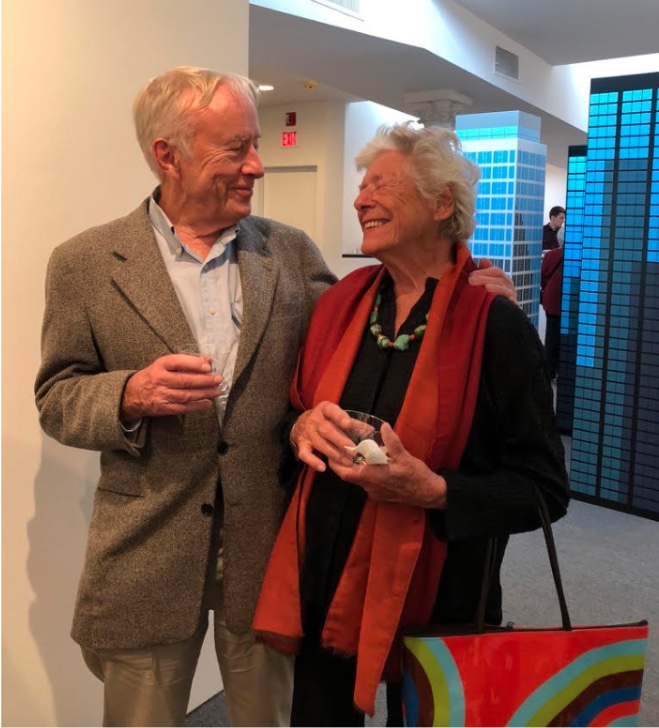
In recent years, he was a familiar face at department events and astrophysics colloquia. At a recent event, Canizares learned about his illness, “but he was still full of energy and talking about how he loved his new Tesla.”
Illness didn’t slow him down. Even a week before he died, Clark was still driving that Tesla from his Chestnut Hill home to his happy place, Martha’s Vineyard, where he had bought a large parcel of land on the edge of Meshacket Cove near Edgartown in 1969.
“He was the eternal young guy, the Jack Kennedy with a full head of hair, full of energy,” recalls Bradt.
On weekends, with friends and students, he constructed a comfortable hexagonal house from a design published in Popular Mechanics. “He designed it as we went along,” says Claude. “He said, ‘How hard could it be?’ We used to pull oysters from the pond as our sort of reward.” He later built an addition, and put in a clay chip tennis court that “was his pride and joy,” recalled his stepson Blair Reischer. “He strictly enforced rules as to what kind of shoes were allowed to touch its surface.” He and his wife Charlotte enjoyed playing tennis well into their 80s.
His retirement retreat was not a place of idleness. There were croquet games, large gatherings of friends and family, and foraging trips for oysters and mushrooms. He tended the nearby forest and kept the poison ivy at bay and the grass short.
An avid reader, earlier this year the professor in him marked up his copy of Chip Wars by Chris Miller with notes about the author’s errors and what he knew the Soviets were up to regarding early chip technology during the Cold War.
As a child, he raced yachts along Green Bay, and at Martha’s Vineyard he remained a keen sailor. He was an avid windsurfer on Edgartown Great Pond, and he and his wife enjoyed multi-day camping and canoeing trips along the lakes in the Boundary Waters Canoe Area Wilderness. He would take along a thick paperback novel, which he would share with Charlotte by ripping off 50 pages; when she was done, they used the pages for kindling.
George was a pianist like his mother, and also played cello; he would join department quartets and play with his daughters Jacqueline and Kasia, who played flute and violin. He and Charlotte attended art shows by relatives and dear friends, and he was very supportive of his children’s and grandchildren’s careers in civil engineering, medicine, US-China relations, and classical music.
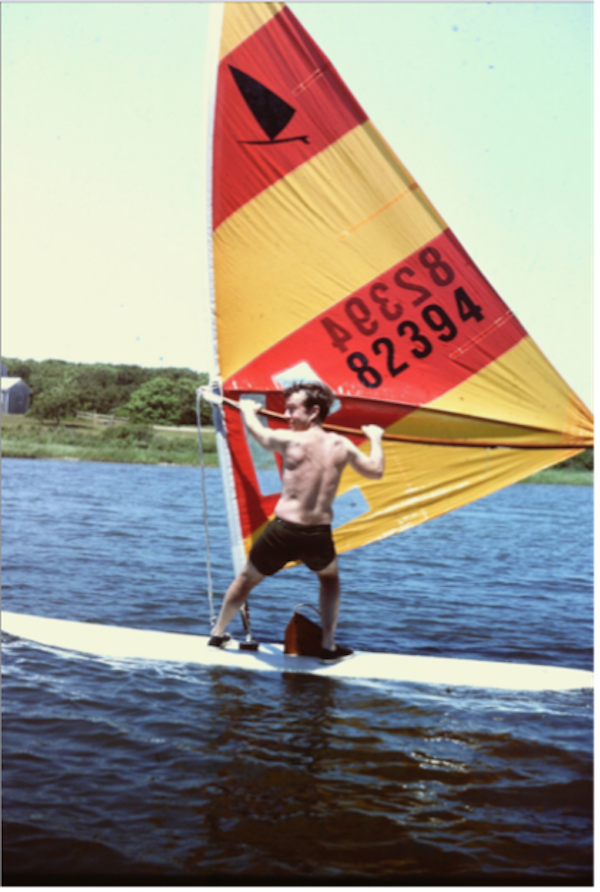
Clark is survived by his daughter Jacqueline, his stepchildren Bridget Reischer, Blair Reischer, Sybil Reischer Ecroyd, and Electa Reischer, and four grandchildren, Otto Ecroyd, Rosalind Reischer, Peter Reischer, and Geneva Reischer Harburger. His daughter Katherine (Kasia) Whipple Clark died in October of 2022, and his beloved wife Charlotte Huston Reischer died in 2019.
A celebration of his life will be held in Brookline at noon on Sunday, May 21. All attendees are invited to speak. For more information, email georgeclarkmemorial1928@gmail.com.
Memorial contributions can be made to the Dana-Farber Cancer Institute or the National Academies’ Committee on Human Rights, the latter to which Clark had left a bequest to help continue their work supporting scientists and researchers at risk.
Related links:
